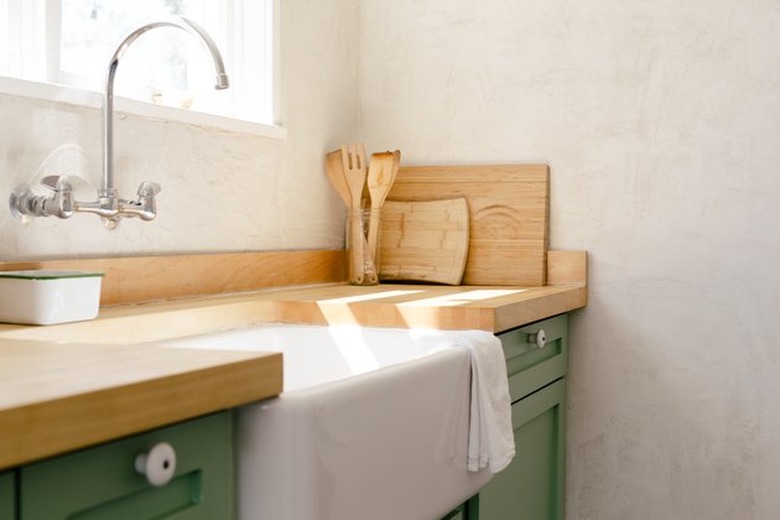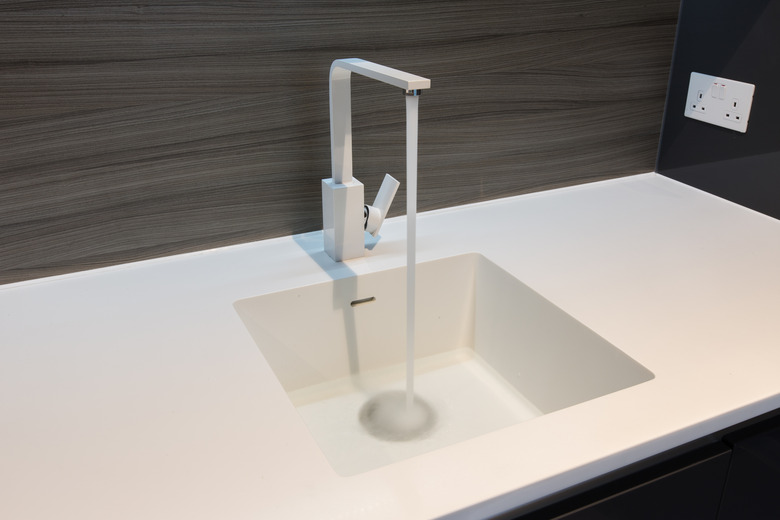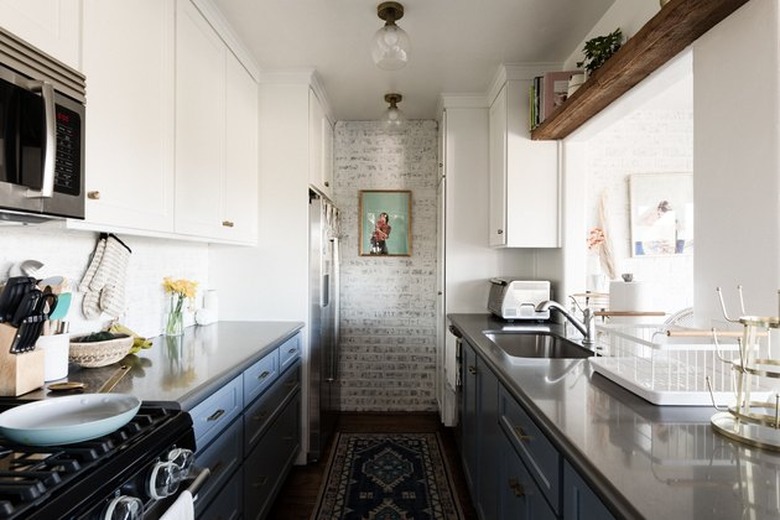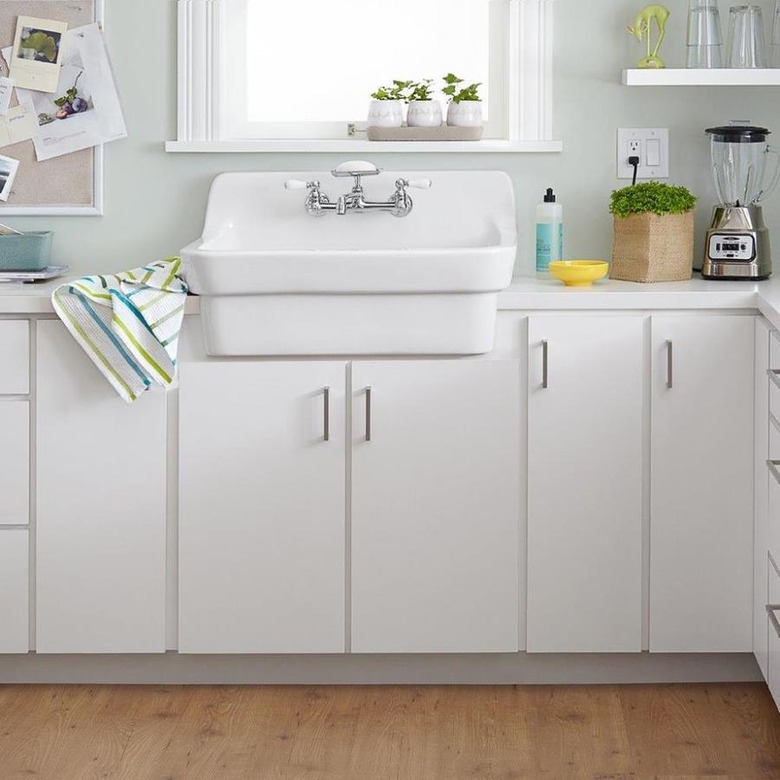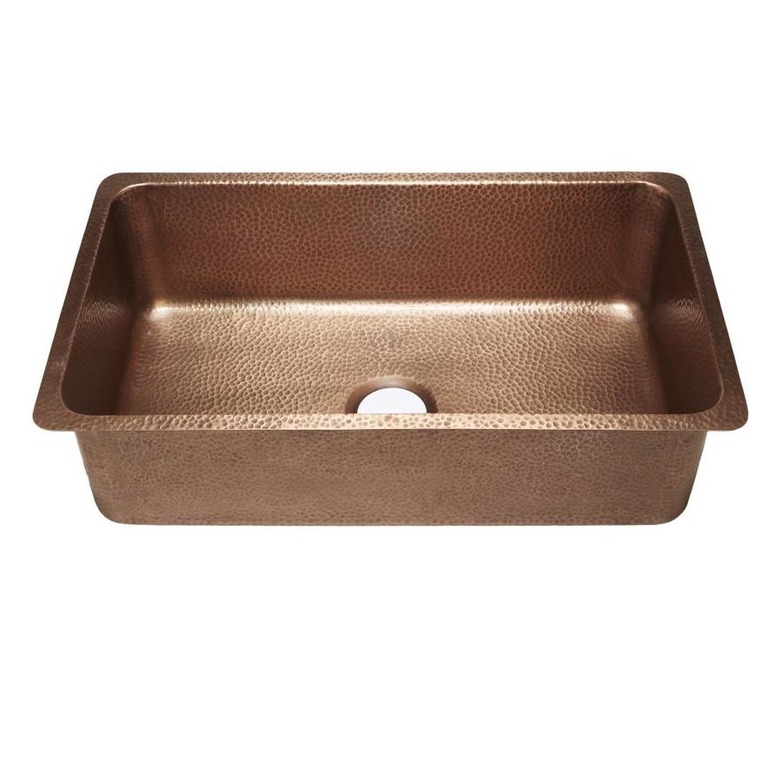The Ultimate Kitchen Sink Buying Guide
Whether you're opting for a quick and easy kitchen makeover or a full-fledged remodel, you'll likely need to replace your kitchen sink. Homeowners typically spend more time at their kitchen sink than any other workstation in the kitchen. So, it's worth your time to consider style, configuration, and materials before heading out to the home improvement store.
Kitchen Sink Style
Kitchen Sink Style
When choosing a sink, the first decision involves a choice of installation style, which will have considerable impact on the scope of your project. There are three basic styles of kitchen sinks: top-mount, undermount, and integral. A top-mount sink, sometimes known as a self-rimming sink, is usually the most budget-friendly option and it's relatively easy to install. To replace an undermount sink, you'll likely need to replace the countertop unless the new sink is exactly the same size. And if you want an integrated sink, you'll definitely need to replace the countertop since the countertop and sink bowl are constructed from the same material, created as a single unit.
Top-Mount or Drop-In Sink
Whether it's known as a top-mount, drop-in, or self-rimming sink, this is the style that has a rim that rests on top of the counter surface. The installer sets or "drops" the sink into a hole that was cut into the countertop. A person with moderate plumbing skills can easily replace a top-mount sink. Disconnect the plumbing, lift out the old sink and faucet, make any necessary repairs and modifications, drop in the new sink with faucet, caulk, and reconnect the water lines and drain. The job typically takes one to four hours.
Tip
Loosen the rim of the old sink with a putty knife to avoid damaging the countertop as you lift out the old sink. Check piping and drain alignment in case there are any differences between the old and new sinks. If you have a garbage disposal, consider replacing it now.
Undermount Sink
An undermount sink usually attaches beneath a solid-surface or synthetic stone (quartz) countertop. This makes it easier to wipe crumbs and spills directly into the sink, and grime doesn't collect along the sink edge. Since the countertop edge will get wet, an undermount sink requires a countertop material unaffected by water, such as concrete, synthetic stone, solid-surface material, or wood treated with a two-part finish. (A standard laminate countertop will not work because the particle board substrate will deteriorate if exposed to even a small amount of water.)
Replacing an undermount sink is much more difficult than replacing a top-mount sink, and likely will involve replacing the countertop as well. Most people hire professional installers who have specialized tools and the ability to handle heavy materials. Professionals will follow these steps to install an undermount sink correctly:
- Measure the base cabinets and precisely cut or form the countertop to fit the cabinets.
- Cut the sink opening and mounting holes based on measurements from the sink and faucet manufacturers.
- Once the countertop is delivered to the home, place it face down, and apply caulk around the underside of the sink opening and position the sink.
- Tighten the mounting screws.
- While the countertop is still face down, install the faucet.
- Turn the countertop over with the sink and faucet attached and fasten it to the base cabinets.
- Attach the sink drain and water lines.
Farmhouse or Apron-Front Sink
A farmhouse sink usually is an undermount style where the rim fits beneath the surface of the countertop; however, they are available for top-mount or pulled-forward installation. But unlike the classic undermount sink, apron-front sinks are not actually suspended from the countertop, but instead are supported by a special cabinet base. These are typically quite heavy sinks, often enameled cast iron, and such sinks require special support. Most people hire a professional to cut out the cabinet front, reinforce the box, place the basin, and complete the countertop, sink, and faucet installation.
Integrated Sink
An integral sink is one that is either formed as part of the countertop at the time of fabrication or one that is made from the same materials and joined to the countertop to form one unit. If you're planning to install a new concrete, stainless steel, solid-surface, or synthetic stone countertop, you can ask the fabricator to integrate the sink and even a drainboard. The price will depend upon the materials you choose and the labor involved. The advantage is there are no seals to harbor germs and grime. However, if the sink becomes stained over time, you'll have to replace the entire countertop. Professional installation is recommended.
Sink Configurations
Sink Configurations
The standard kitchen sink measures 33 x 22 inches. Within that space, you have different sink bowl options. More people are deviating from the standard two-bowl sink in favor of a single sink bowl to wash large pots and pans that don't fit in a dishwasher. A single bowl also scales well in either a large or small kitchen. However, a double or triple-bowl sink is great for a multitasking cook who uses one bowl for food prep and the other bowl or bowls to handle dirty dishes. Even double-bowl sinks come in different shapes, sizes, and depths. So you have the ability to choose a configuration that reflects how you use your kitchen.
Besides the number of sink bowls, consider the number of holes you'll need to accommodate the faucet, handles, and accessories such as a soap dispenser. A single-handle faucet has a modern look and is easy to adjust water temperature with one hand. Some models include touch-free sensors and a pulldown sprayer. The key is to make sure the sink and faucet configuration will fit within the available space.
Kitchen Sink Materials
Kitchen Sink Materials
Once you've decided on a style and configuration, you'll need to choose the sink material. Consider appearance as well as durability and resistance to stains. Each material has its own set of strengths and potential drawbacks.
Stainless Steel
Stainless steel sinks are popular because they're affordable, easy to maintain, coordinate with stainless steel appliances, and are readily available in various top-mount or undercounter configurations. When shopping for a stainless steel sink, note the gauge or thickness of material. A lower number equates to a thicker material. Therefore, a heavy-duty sink will be either 16- or 18-gauge stainless steel, while a bargain sink might be 20- or 22-gauge stainless steel. Stainless steel with added chromium and nickel, known as the 300 series, prevents corrosion and damage from high temperatures. Prices range from $100 up to $850. There are only a few drawbacks to a stainless steel sink: water spots show and the sink can be noisy as dishes, pots, and pans make contact.
Enamel
Cast-iron sinks that are coated with enamel or porcelain lend a timeless design to both modern and traditional kitchens. Well-maintained cast-iron sinks add value to a home because of their durability. In fact, if you're lucky, you can nab a vintage cast-iron sink and score points for style and reuse. Cast-iron sinks do have a few drawbacks. Because they're heavy, you'll need reinforced countertops and cabinetry. They're also prone to stains and scratches, so use recommended cleansers and protect the bottom of the sink bowl with a mat. It's also possible to chip the surface, exposing the black iron base. A new sink typically costs between $300 and $700, and a salvage or vintage sink will cost less. If you decide to install a cast-iron sink yourself, have a plan to safely manage the 100+ pounds of weight as you maneuver the sink into place.
Fireclay
Fireclay sinks look like enamel cast-iron sinks; however, they're much more durable. The material is made from a combination of clay and glaze that's hardened to endure bumps from heavy cast-iron pots and pans. Each sink is individually crafted, so it can fit any kitchen configuration and include unique embellishments. A fireclay sink resists stains and chipping, yet can show wear over time. Like cast-iron sinks, a fireclay sink is considered a luxury and costs from $400 to over $1300. Professional installation is recommended.
Copper
A copper sink not only creates a warm focal point in the kitchen but also kills 99.9 percent of bacteria. Now that's a hardworking sink! Copper sinks are available in top mount, undermount, and farmhouse style. You also have the choice of a smooth or hammered finish. The drawback is price. A quality sink that's 99 percent copper and 1 percent zinc, between 14- and 18-gauge, costs from $600 up to $1,200 depending on style, size, and brand.
Solid-Surface Material
These sinks are made of acrylic resin that has the look of enamel without the heft or high price. The drawbacks include discoloration and scratches, plus sensitivity to extreme heat such as a hot pan. Consider this material if you rarely use the kitchen or have a contemporary kitchen with lightweight cabinets and countertops. You can purchase a solid surface top mount sink for less than $200 and install it yourself.
Composite Stone
A composite stone sink is a blend of natural quartz or other natural stone particles blended with acrylic resins. Originally, these composite stone products were all marketed under the label of "quartz," even though they were not solid stone at all, but were instead made from a composite material. Today, manufacturers often make a distinction between "composite quartz" and "composite granite" to refer to engineered stone products that use predominantly pulverized quartz or pulverized granite as their principal mineral component. Whatever they are called, these sinks have the appearance of stone and are very durable, yet they're more affordable and don't require sealing. They're also available in broad range of colors, shapes, sizes, and styles. Beware that extreme heat can crack or damage the surface. Prices range from $200 to $400.
A stone sink is a rare luxury, as it is carved from a block of granite, marble, slate or pure quartz. People often pair a stone sink with a reinforced wood countertop to achieve an organic look. The obvious drawbacks to a stone sink are weight and the high cost, which starts at a bare minimum of $1000. If you go for stone, remember to regularly seal it to prevent staining.


